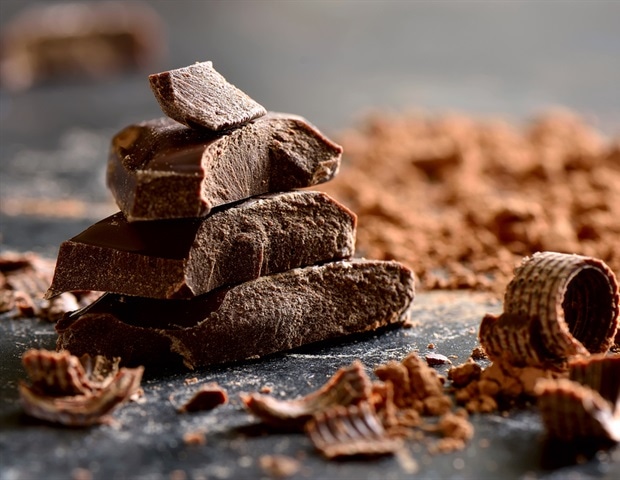Consuming dark, but not milk, chocolate may be associated with lower risk of developing type 2 diabetes (T2D), according to a new study from Harvard T.H. Chan School of Public Health.
Our findings suggest that not all chocolate is created equal. For anyone who loves chocolate, this is a reminder that making small choices, like choosing dark chocolate over milk chocolate, can make a positive difference to their health.”
Binkai Liu, lead author, doctoral student in the Department of Nutrition
The study will be published online Dec. 4 in The BMJ.
There is an existing body of research on the relationship between chocolate and T2D but findings have been inconsistent, and few studies have differentiated between chocolate subtypes (dark versus milk).
The researchers sought to fill this gap using data from the Nurses’ Health Studies I and II and the Health Professionals Follow-up Study. Over the course of 30+ years, 192,000 adult participants who were free of diabetes at the study’s outset reported on their food habits, including chocolate consumption, as well as their diabetes status and body weight. By the end of the study period, nearly 19,000 of the total participants reported being diagnosed with T2D. Of the nearly 112,000 who reported specifically on their dark and milk chocolate intake, nearly 5,000 were diagnosed with T2D.
The study found that participants who consumed at least five ounces of any type of chocolate per week had a 10% lower risk of T2D compared to those who never or rarely consumed chocolate. Dark chocolate had an even bigger impact: Participants who consumed at least five servings of this chocolate per week showed a 21% lower risk of T2D. The researchers also observed a 3% reduction in risk for every serving of dark chocolate consumed per week. Consumption of milk chocolate, meanwhile, was not associated with reduced T2D risk. Increased consumption of milk chocolate, but not dark chocolate, was associated with long-term weight gain, a potential contributor to the development of T2D.
“We were surprised by the clear split between dark and milk chocolate’s impact on diabetes risk and long-term weight management,” said corresponding author Qi Sun, associate professor in the Departments of Nutrition and Epidemiology. “Even though dark and milk chocolate have similar levels of calories and saturated fat, it appears that the rich polyphenols in dark chocolate might offset the effects of saturated fat and sugar on weight gain and diabetes. It’s an intriguing difference that’s worth exploring more.”
The authors noted that participants’ chocolate consumption was low relative to previously recorded national averages and that the findings may not apply to individuals with very high chocolate consumption.
Other Harvard Chan authors included Lu Zhu, Yang Hu, JoAnn Manson, Molin Wang, Eric Rimm, and Frank Hu.
The study was funded by the National Institutes of Health (grants UM1 CA186107, P01 CA87969, R01 HL034594, U01 CA176726, U01 CA167552, R01 HL035464, R01 HL60712, R01 DK120870, R01 DK126698, R01 DK119268, U2C DK129670, R01 ES022981, and R21 AG070375).
Source:
Journal reference:
Liu, B., et al. (2024) Chocolate intake and risk of type 2 diabetes: prospective cohort studies. BMJ. doi.org/10.1136/bmj-2023-078386.
Source link : News-Medica

